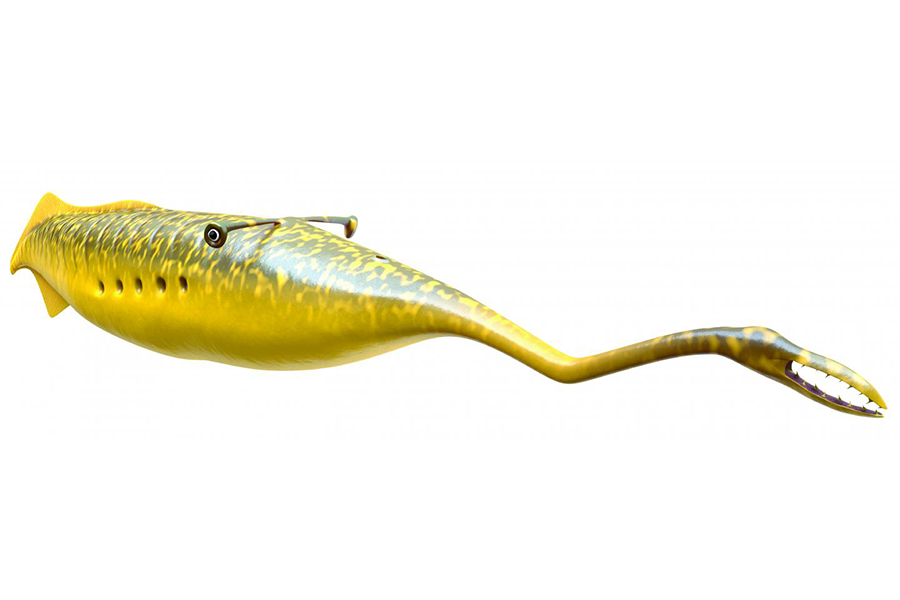Curious 'Tully Monster' surprises scientists with hidden backbone
Loading...
The soft-bodied fossil of the Tully Monster has been the subject of scientific debate for over 50 years. But a team of researchers from Yale, the American Museum of Natural History and the Argonne National Laboratory suggest in their study published Wednesday in the journal Nature that the squishy prehistoric fish was actually a vertebrate.
Amateur fossil hunter Francis Tully discovered the first Tully fossil in northeastern Illinois in 1958, and thousands of other Tully Monster fossils continue to be found at the site. And local interest in the Tully Monster mystery is enthusiastic, to say the least. It became the state fossil in 1989 and its image is even printed on some U-Haul trucks.
But despite the numerous fossils and its celebrity status, little is known about the physical characteristics of the 300-million-year-old, foot-long animal.
“I was first intrigued by the mystery of the Tully Monster,” says lead author Victoria McCoy in a press release. “With all of the exceptional fossils, we had a very clear picture of what it looked like, but no clear picture of what it was.”
But now researchers say they finally understand the creature’s physiology.
The Tully Monster was a jawless fish, a vertebrate ancestor of the modern lamprey. It is described as “an oddly configured sea creature with teeth at the end of a narrow, trunk-like extension of its head and eyes that perch on either side of a long, rigid bar ...” Comparing the Tully Monster to a hammerhead shark, Ms. McCoy says their wide-set eyes gave them perceptual vision to see what their extended mouths were actually catching.
The authors refute previous assumptions about the Tully Monster that claim the animal was a mollusk, or made completely out of soft tissues.
“Basically, nobody knew what it was,” Derek Briggs, a geology and geophysics professor at Yale and co-author of the study, said in the release. “The fossils are not easy to interpret, and they vary quite a bit. Some people thought it might be this bizarre, swimming mollusk. We decided to throw every possible analytical technique at it.”
By using X-ray analysis at the Argonne National Laboratory, McCoy and her co-authors realized the ‘guts’ of the Tullimonstrum gregarium were not all the same material, suggesting a notochord – aka a primitive backbone – existed.
“There was no big ‘Aha!’ moment that pointed to the lamprey. But put together, the strongest evidence was that it could be a lamprey,” McCoy told The New York Times. “The coolest thing is finding out that as weird as it looks, it is part of a familiar group of animals.”
Connecting the Tully Monster to modern lampreys is especially interesting, Martin Smith from Durham University told The Atlantic, because even modern lampreys are considered one of the more archaic species.
“Living lampreys are often perceived as ‘primitive’ – a good proxy for the form of the earliest fish,” said Dr. Smith. “Tullimonstrum provides a powerful antidote to this misconception: the lamprey lineage has undergone its own 500 million years of evolutionary experimentation, producing a great diversity of complex, unusual and sometimes unexpected body plans.”






